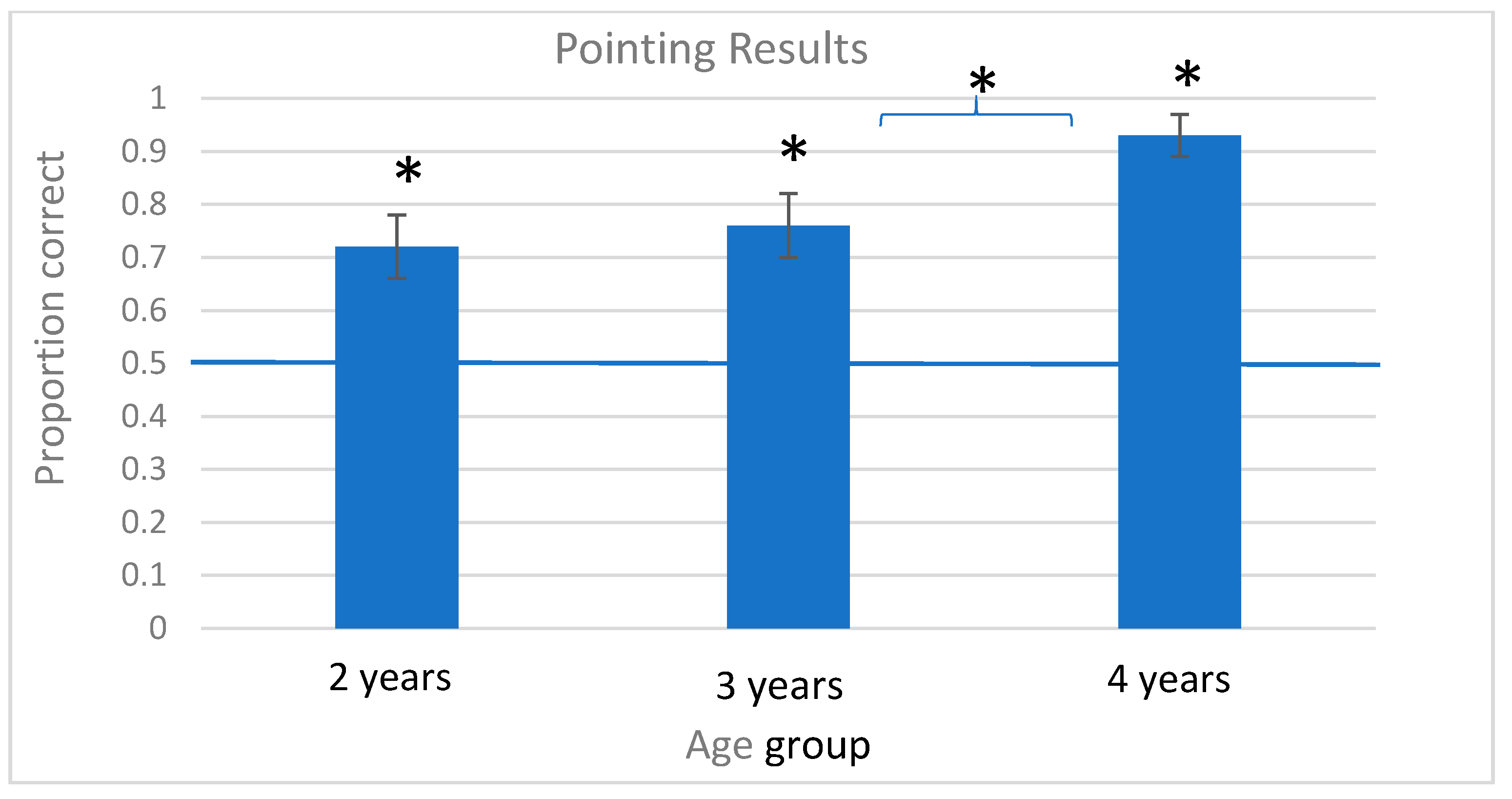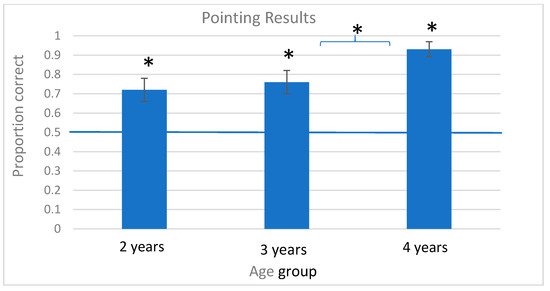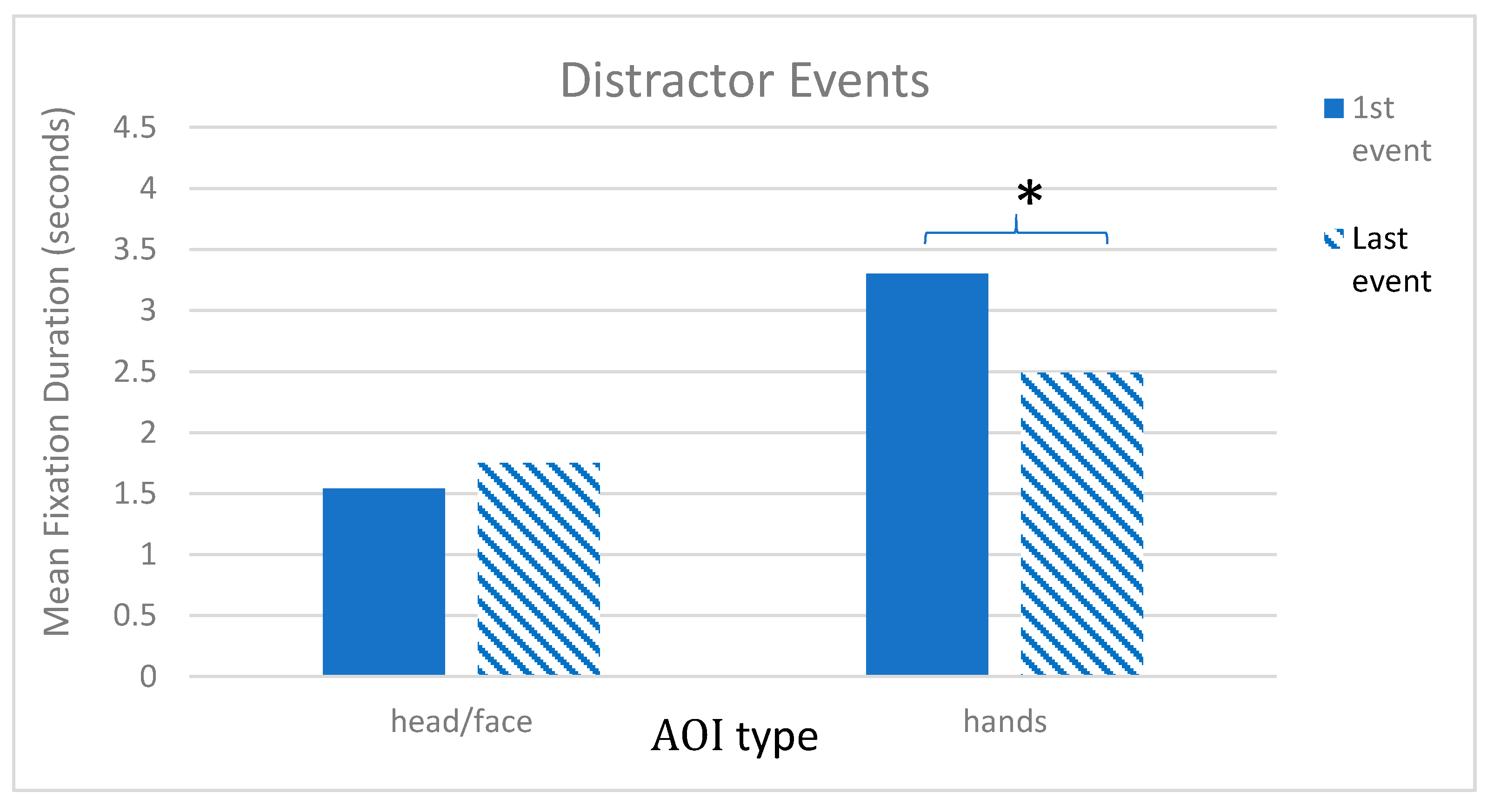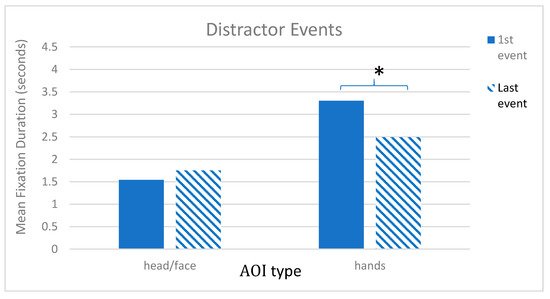You're using an outdated browser. Please upgrade to a modern browser for the best experience.
Please note this is a comparison between Version 2 by Yvaine Wei and Version 1 by Jane Childers.
Verbs are central to the syntactic structure of sentences, and, thus, important for learning one’s native language. Pointing results show that 2-, 3-, and 4-year-old children are able to learn and extend newly learned verbs to new events at test. In addition, children’s visual attention to agents’ faces and hands differs depending on whether events cooccur with the new verb or do not.
- verbs
- eye tracking
- comparison
1. Introduction
Verbs are central to the syntactic structure of sentences. A controversy in this area is whether children focus on the agent of the action or the action being performed, and to what extent they focus on each one. Some studies suggest that young children learn verbs best when a single agent is seen, which could mean that they are attending too much to agents rather than the actions while learning verbs [1,2][1][2]. In other studies, children seem to be attending to actions [3] or results, e.g., [4,5][4][5]. Additionally, in everyday contexts, children often see events linked to a new verb that are interspersed with distracting events.
To accurately acquire a verb, learners must solve what Gleitman and Gleitman [6] described as the “packaging problem”, wherein learners must package together only the relevant aspects of a dynamic event and disregard any irrelevant information. Given the difficulty of this problem, learners often use information across events and sentences or engage in cross-situational learning, e.g., [7,8,9,10][7][8][9][10]. Research has shown that the comparison of events can help children learn and generalize verbs, e.g., [3,11,12,13,14][3][11][12][13][14]. Additionally, children can benefit from seeing similar or varied events, depending on the nature of the task and test conditions [5,11,12,15,16][5][11][12][15][16]. In light of this prior research, it seems clear that young children can glean information across a set of events as they learn verbs, but theories differ in the mechanisms they posit that underlie this cross-situational processing.
Two key theories in this area are statistical learning and structural alignment. In statistical learning, observers compare events by noting co-occurrences between specific words and referents, e.g., [17,18,19][17][18][19]. In structural alignment, observers compare events linked to a new verb over instances by aligning elements across the instances based on their common relational structure, e.g., [20,21,22][20][21][22].
A Tobii x30 eye tracker was used to track children’s looking during the learning phase to the agents’ head/face vs. their hands within each event. As no prior study has tracked looking to the face vs. hands, it was hypothesized that children would look more to the hands as the hands AOI (area of interest) is larger (in ourthe stimuli and in everyday life) than the face AOI, and the hands are moving. However, two prior studies demonstrate that children can also be overly attentive to the agent in an event, performing fewer verb extensions in events with multiple agents [2], particularly when events were more complex [1]. Given that these two studies suggest a cost from attending to agents, it could be that children will attend more to the face/head of an agent than to the hands during verb learning. Attending more to the hands would help in verb learning while attending to the face would not.
2. Pointing Results
A separate analysis examined whether children’s pointing responses differed from chance. One sample t-test showed that children in all three age groups exceeded chance. (All t-tests reported are two-tailed.) Specifically, 2-year-old children’s responses exceeded chance (Mprop = 0.72, SE = 0.06), t(23) = 3.40, p = 0.002, as did 3-year-old children’s (Mprop = 0.76, SE = 0.06), t(30) = 4.60, p < 0.001, and 4-year-old children’s responses (Mprop = 0.93, SE = 0.04), t(20) = 12.21, p < 0.001. Reflecting on this pattern of responses, the 2- and 3-year-olds’ pointing responses are similar to each other, but 4-year-olds appeared to be responding at a significantly higher rate. Indeed, an independent samples t-test comparing 3-year-olds’ to 4-year-olds’ responses was significant, t(50) = −2.25, p = 0.029 (see Figure 31).

Figure 1. Pointing results, * p < 0.05, error bars show SEM, blue line represents chance responding.
Figure 3. Pointing results, * p < 0.05, error bars show SEM, blue line represents chance responding.
3. Eye Tracking Results: Looking to the Face vs. the Hands
In the distractor events, a different pattern emerged. A repeated measures ANOVA revealed a main effect of trial number, F (1, 69) = 26.96, p < 0.001, ηp2 = 0.28, a main effect of AOI, F (1, 69) = 53.91, p < 0.001, ηp2 = 0.44, and a trial number × AOI interaction, F (1, 69) = 14.10, p < 0.001, ηp2 = 0.17. Pairwise comparisons with Sidak corrections showed that, as in the target trials, during these distractor events, children looked longer at the hands than the face with hands (M = 3.30; SE = 0.13) greater than face (M = 1.54; SE = 1.0) in the first distractor event, p < 0.001 (2 sided), and hands (M = 2.49; SE = 0.15) greater than face (M = 1.75; SE = 0.14), p = 0.004 (2 sided) in the second distractor trials. However, across trials, a different pattern was seen with children’s looking to the hands decreasing, p < 0.001, while looking to the face was maintained (see Figure 52).
 Figure 2. Distractor Events. Graph shows mean total fixation duration by Trial (first, last) and AOI type (head/face, hands), * p < 0.05.
Figure 2. Distractor Events. Graph shows mean total fixation duration by Trial (first, last) and AOI type (head/face, hands), * p < 0.05.Figure 5. Distractor Events. Graph shows mean total fixation duration by Trial (first, last) and AOI type (head/face, hands), * p < 0.05.
4. Differing Attention to Different Elements in Events
TheseIt resultis shown that children visually attend to events that are linked to a new verb differently than they attend to distracting events. This is important because children learning verbs often see other intervening events as they are learning verbs (e.g., seeing a stirring event while learning the verb ‘chop’ in the kitchen), which need to be processed differently than events linked to the target verb. Specifically, across age groups, when viewing target events, children increase their looking to the hand region over trials (where the action is taking place) and decrease their looking to the agents’ face, which is less informative for learning a new verb’s meaning. In contrast, when viewing distracting events, children decrease their looking to hands over trials (i.e., the action) while maintaining their attention to the head/face region. Thus, in the distractor events, they are looking less at what the agent is doing as they see more trials, which should help them ignore those events as they learn a verb, whereas when seeing relevant events, they are increasing their looking to the agent’s actions, which should be helpful for deducing what a new verb means.
These results add to a body of research showing that children can compare events during verb learning, and that comparisons help them extend new verbs, e.g., [3,14,15][3][14][15]. What these results add is evidence that children are adjusting their visual fixations differently as they see events linked to a new verb as opposed to distracting events, suggesting that they are strategic in how they visually inspect events. These new results also add to the few studies that have used eye tracking to study children’s verb learning.
5. Conclusions
In conclusion, learning new verbs is important to learning one’s native language. OurThe results suggest that by 2 ½ years old, children have developed visual strategies for inspecting events that should help them attend to events appropriately when seeing relevant events and hearing verbs (attending more to what the hands are doing than the face) and help them ignore distracting information (as they focus on faces and not hands) when they see distracting events. These are exciting new findings that reveal what mental mechanisms could underlie early verb learning. They also suggest ways to help children who may be experiencing a language delay and, perhaps, are not adjusting their visual attention in helpful ways. By directing their attention, or teaching them strategies for comparing events and ignoring events, therapists may be able to help children learn how to acquire new verbs.
References
- Childers, J.B.; Paik, J.H.; Flores, M.; Lai, G.; Dolan, M. Does Variability Across Events Affect Verb Learning in English, Mandarin, and Korean? Cogn. Sci. 2017, 41, 808–830.
- Maguire, M.J.; Golinkoff, R.M.; Brandone, A.C.; Hirsh-Pasek, K. Focusing on the relation: Fewer exemplars facilitate children’s initial verb learning and extension. Dev. Sci. 2008, 11, 628–634.
- Scott, R.M.; Fisher, C. 2.5-Year-olds use cross-situational consistency to learn verbs under referential uncertainty. Cognition 2012, 122, 163–180.
- Behrend, D.A. The development of verb concepts: Children’s use of verbs to label familiar and novel events. Child Dev. 1990, 61, 681–696.
- Childers, J.B. Attention to multiple events helps two-and-a-half-year-olds extend new verbs. First Lang. 2011, 31, 3–22.
- Gleitman, L.R.; Gleitman, H. A picture is worth a thousand words, but that’s the problem: The role of syntax in vocabulary acquisition. Curr. Dir. Psychol. Sci. 1992, 1, 31–35.
- Behrend, D.A. Processes involved in the initial mapping of verb meanings. In Beyond Names for Things: Young Children’s Acquisition of Verbs; Tomasello, M., Merriman, W.E., Eds.; Psychology Press: Hove, UK, 1995; pp. 251–273.
- Fisher, C.; Hall, D.G.; Rakowitz, S.; Gleitman, L. When it is better to receive than to give: Syntactic and conceptual constraints on vocabulary growth. Lingua 1994, 92, 333–375.
- Imai, M.; Childers, J.B. Learning individual verbs and the verb system: When are multiple examples helpful? In Language and Concept Acquisition from Infancy through Childhood; Childers, J.B., Ed.; Springer: Cham, Switzerland, 2020; pp. 131–158.
- Pinker, S. Learnability and Cognition; MIT Press: Cambridge, MA, USA, 1989.
- Childers, J.B.; Paik, J.H. Korean- and English-speaking children use cross-situational information to learn novel predicate terms. J. Child Lang. 2009, 36, 201–224.
- Haryu, E.; Imai, M.; Okada, H. Object Similarity Bootstraps Young Children to Action-Based Verb Extension. Child Dev. 2011, 82, 674–686.
- Snape, S.; Krott, A. The benefit of simultaneously encountered exemplars and of exemplar variability to verb learning. J. Child Lang. 2018, 45, 1412–1422.
- Waxman, S.R.; Lidz, J.L.; Braun, I.E.; Lavin, T. Twenty four-month-old infants’ interpretations of novel verbs and nouns in dynamic scenes. Cogn. Psychol. 2009, 59, 67–95.
- Childers, J.B.; Parrish, R.; Olson, C.V.; Burch, C.; Fung, G.; McIntyre, K.P. Early Verb Learning: How Do Children Learn How to Compare Events? J. Cogn. Dev. 2016, 17, 41–66.
- Imai, M.; Li, L.; Haryu, E.; Okada, H.; Hirsh-Pasek, K.; Golinkoff, R.M.; Shigematsu, J. Novel noun and verb learning in Chinese-, English-, and Japanese-speaking children. Child Dev. 2008, 79, 979–1000.
- Thiessen, E.D. How the Demands of a Variable Environment Give Rise to Statistical Learning. In Language and Concept Acquisition from Infancy through Childhood; Springer: Cham, Switzerland, 2020; pp. 59–77.
- Thiessen, E.D.; Kronstein, A.T.; Hufnagle, D.G. The extraction and integration framework: A two-process account of statistical learning. Psychol. Bull. 2013, 139, 792–814.
- Yu, C.; Smith, L.B. Rapid Word Learning Under Uncertainty via Cross-Situational Statistics. Psychol. Sci. 2007, 18, 414–420.
- Gentner, D. Structure-mapping: A theoretical framework for analogy. Cogn. Sci. 1983, 7, 155–170.
- Gentner, D.; Namy, L.L. Analogical Processes in Language Learning. Curr. Dir. Psychol. Sci. 2006, 15, 297–301.
- Markman, A.; Gentner, D. Structural Alignment during Similarity Comparisons. Cogn. Psychol. 1993, 25, 431–467.
More
